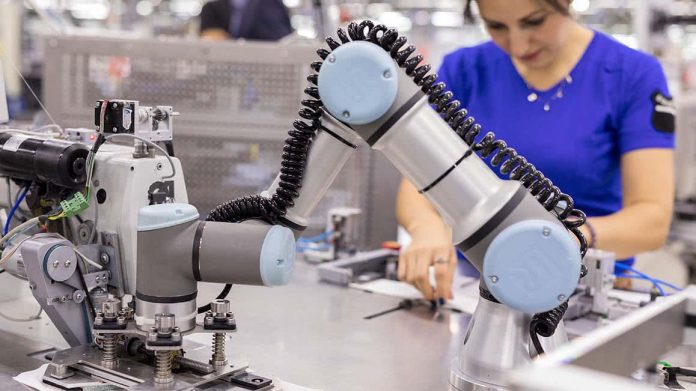German fashion house Hugo Boss has been applying advanced analytics to its production plants in four ways, it told IoT Solutions World Congress in Barcelona last week. These variously cover predictive maintenance, line optimisation, and efficiencies around consumption of materials and energy.
Speaking during a panel session during the Barcelona show, Erkut Ekinci, the company’s head of IT, explained the company has sought to go beyond gathering data about live operations, to start to look into the future, in order to predict failures and pre-empt workooads before they disrupt production.
“Before we just worked to collect data, and use data just to manage the shop floor. But now we are thinking about the future – yes,managing the shop floor [today is important], but what about tomorrow and next week? This is what we are working on now,” said Ekinci.
“Predicting the future is different to [analysing processes] today – [different to] collecting data, taking readings, getting reports, taking actions. Because these are all human behaviours. What about the future? If you can create (see) the future, you can change the game. It is a game changer.”

In particular, Hugo Boss is exploring these ends at its factory in Izmir, one of the four production sites in Europe, and by far the largest, covering an area of 65,000 square metres, and employing around 4,000 staff. Izmir produces suits, jackets, shirts and coats.
It is not just the biggest Hugo Boss factory in Europe; it is also the company’s smartest, selected back in 2015 to play host to the company’s adventures with new industrial tech.
Employees, machines and processes at the site have been networked to track production data and create a ‘digital twin’ for running simulations of new production setups, and test out theories plotted out of production-line data. The company is using robotics and automation, as it can, and taking data insights to improve processes.
In Barcelona, Ekinci highlighted four ways in which the company is making use of data from its production environment. The first is for predictive maintenance – by making sewing machines sing, and see into the future.
“In our factories, there are about 2,500 different machines – mostly sewing machines. If you listen to them, they will say something about the future – [through] preventive maintenance, predicting failures, utilization rates. And we have implemented such a project, also consisting of [IoT] data collection, and started to think about the utilization rate and future failures.”
The company is also using data to schedule incoming orders against working production lines, to bring higher efficiency to operations.
Ekinci explained: “Another project [has been to do with] line assignments – between lines and orders, [and how to find the] perfect match for assigning orders to lines. You need the best match [for productivity, quality, and delivery], considering as well machines, operators, and the characteristics of the order, like [types of] fabric.”
A third tactic has been to reduce fabric consumption in cutting areas, by mapping the cutting patterns against the available fabric. “We are trying to find the best marker combination – about the placement of fabric pieces in the cutting area. If you can find the best markers, you can [use can consume less fabric].”
As well, the company is looking to manage energy consumption with sensors and analytics.
The last is smart energy management. “If you can collect the data – from water, natural gas, electricity – you can think about leakage, as well, which is something we did last year,” said Ekinci.

